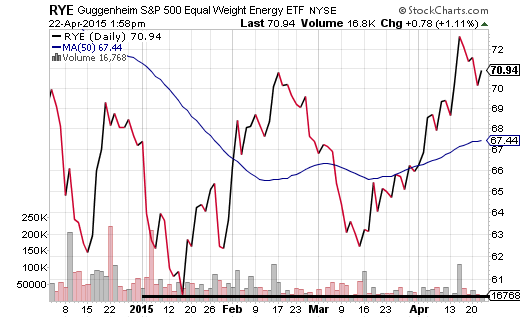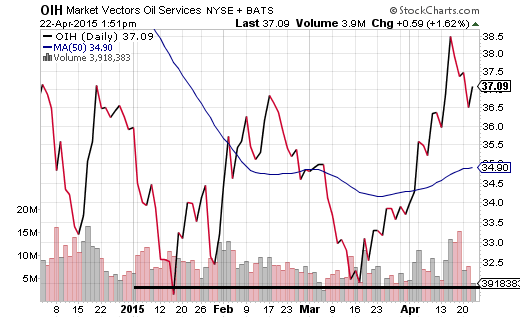Maybe you don't know who Rex Tillerson is. Maybe you didn't realize that Tillerson, a dinosaur in the energy sector, is the chairman and CEO of Exxon Mobil (NYSE:XOM) – one of the largest corporations on the planet. The company that he runs had been the largest in the world by market capitalization up until mid-2011 – when smartphone madness effectively handed the crown to Apple (NASDAQ:AAPL). Strangely enough, Exxon briefly reclaimed the title in January 2013 before once again relinquishing it in August of that year.
When oil prices started collapsing in late 2014, I began to pay more attention to oil bigwigs as opposed to media analysts. The reason was simple: leaders know more about what it takes to generate profits in their respective industries than those who are paid to write reports. In particular, Tillerson expressed something back on December 3rd that has stuck with me to this day. Specifically, he explained that Exxon Mobil could withstand $40 per barrel.
The quote? “What you do is ensure that you can invest and be successful at the bottom of the cycle,” he said. “We test across a range that’s all the way down to $40 and up to $120.” The implications of such a statement are threefold. First, a number of seen and unforeseen forces – commodity price speculation, changes in global supply, changes in global demand, geopolitical conflict, radical shifts in currencies and so forth – create a wide range of pricing possibilities for the non-renewable resource. Second, the strongest and most well-run U.S. companies in the traditional energy space would be able to take advantage of oil prices at the lowest end of the range. Third, and perhaps most importantly, $75-$80 per barrel for crude was a far more likely future scenario than $25-$30.
Now, let’s consider how prescient Rex Tillerson may have been back in early December. He had implicitly discussed the possibility that oil would overshoot to the lowest end of its range at a time when it had become increasingly clear that oil was free-falling. At the same time, he had explicitly stated that oil at $40 was still profitable for one of the world’s premier energy providers. In other words, could weakening economic demand, unusual levels of oversupply, temporary cessation of conflict in the Middle East and Eastern Europe, a crowded U.S. dollar bandwagon and rampant short-selling of the commodity trump the will and firepower of “Big Oil?”

As if by magic, oil appears to have bottomed out at $42.5 per barrel in March. Moreover, it is roughly 8% higher than when 2015 started. Similarly, the slope of the 50-day trendline has turned positive and the spot price is well above the key moving average.
Admittedly, I had a tough time seeing oil moving any lower than $60 per barrel when the doom-n-gloomers first whistled the $30 tune. My thinking? Russia’s dependency on revenue from the exporting of oil might cause the country to move heaven and earth to prop up prices. Then again, I am not Rex Tillerson. His December-3rd conversation on CNBC gave me reason to suspect that $40 could be the definitive low point, and that strong corporations in the energy space would do well from that point forward.
And how! We can see that a variety of popular oil ETFs – exploration/production, services, integrated – share similar characteristics to the spot price in the chart above. Off of approximate 2015 low points, SPDR S&P Oil & Gas Exploration & Production (NYSE:XOP), Market Vectors Oil Services (ARCA:OIH) and Guggenheim S&P 500 Equal Weight Energy (NYSE:RYE) have rallied 23%, 17.5% and 17.8% respectively.

From an ownership standpoint, I prefer RYE to the ones that I mentioned above or other popular index trackers. Traditional market-cap weighted ETFs allocate too much to Exxon Mobil, Chevron (NYSE:CVX) and Schlumberger (NYSE:SLB). In contrast, RYE incorporates non-speculative energy companies from the S&P 500, yet weights them equally to provide greater diversification across the space. Don’t get me wrong, I love quality dividend payers like XOM and CVX; I admire just how well Schlumberger has always run its business. Nevertheless, when it comes to an ETF that spans the entire sector and offers greater diversification across the names in that sector, RYE is my preference.


